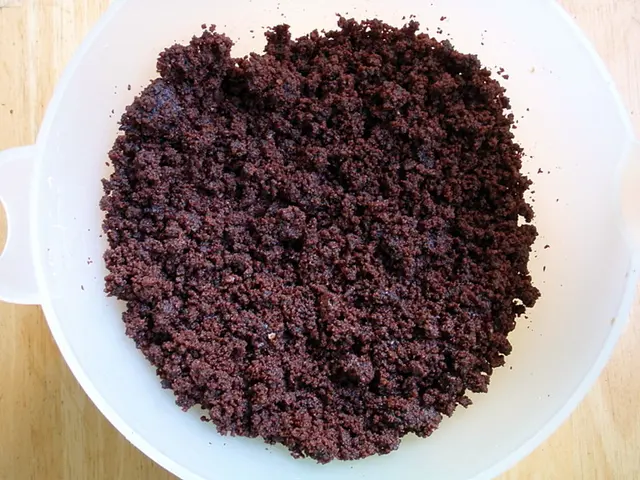Differentiating Age Spots and Skin Cancer: Identification Guide
Hey there! Let's dive into differentiating age spots, notorious skin issues, and possible precursors to cancer - the catchy trio of age spots, skin cancer, and actinic keratosis.
Now, first thing's first... What's the deal with age spots? Indeed, they're spots that manifest on your skin as you age, thanks to our melanin production on overdrive due to sun exposure, hence they sunbathe on the skin's exposed spots such as the face, hands, shoulders, and arms. Interesting, huh?
So, they're as flat as a pancake, oval-shaped, with a dash of yellow, brown, or gray, and their borders are as clear as day. They may range from a few millimeters to a couple of centimeters. Think of them as your body's inkblots, unavoidably sprouting up as you age!
Next up, we've got skin cancer – bad news, but don't fret just yet, as we'll help you spot the signs! Unlike age spots, skin cancer is harmful and can spread like wildfire. Common locations for this menace are sun-soaked skin parts, and it occurs due to UV radiation or other external/genetic factors causing infected cells to mutate, grow, and invade surrounding areas like a pack of crazed dominos.
There are several types of skin cancer:
- Basal cell carcinoma – Waxy or pearly bumps with visible blood vessels, and sometimes scar-like, flat lesions.
- Squamous cell carcinoma – Rough, scaly patches, open sores, or elevated growths that may resemble a crusty, scabby mess, yes, that's as unpleasant as it sounds.
- Melanoma – Irregularly shaped and colored moles, often asymmetrical with uneven borders and multiple colors. Capisce?
Lastly, there's actinic keratosis, a precancerous growth that appears due to excessive UV radiation damage. They're not mere age spots, no siree – often raised, scaly, and rough-textured, these buggers can mimic age spots, but don't be fooled.
So, what's the difference between age spots and skin cancer? Age spots are usually flat, smooth, circular, and a uniform color, without scale or roughness, while skin cancer and actinic keratosis display rough, scaly textures and bleeding or crusting lesions.
Actinic keratosis symptoms include rough or scaly patches, an occasional sandpaper-like texture, and sometimes confused with age spots due to pigmentation, but with a rough or scaly texture unlike smooth age spots.
When to worry (and call your doctor), you say? Well, if you spot a new mark, change in color, shape, or size, an unusual spot that itches, crusts, scabs over, or bleeds and doesn't heal in four weeks, it's time to raise the alarm. Early detection is crucial for better odds of defeating any potential pistol-packing skin cancer cells!
Stay tuned for more on diagnosis, treatment options, and prevention techniques! As they say, knowledge is power, and this knowledge might just save your hide!
Seniors may find that age spots, a common skin condition, become more noticeable as melanin production increases, often due to extended sun exposure. While age spots are generally harmless, other skin cancer types such as basal cell carcinoma, squamous cell carcinoma, and melanoma can affect individuals of any ages and might have symptoms like irregular shapes, varied colors, and suspicious growths or lesions. It's crucial to be aware of potential signs of skin cancer and precancerous conditions like actinic keratosis, which often appear on sun-exposed skin areas and can mimic age spots with their rough, scaly texture. If you notice new spots, changes in existing spots' colors, shapes, or sizes, or symptoms like bleeding, crusting, or non-healing sores, prioritize seeing a dermatologist for further evaluation and early intervention. Skin-care practices, health-and-wellness routines, and understanding medical-conditions like skin cancer and actinic keratosis are essential for maintaining proper skin-care and overall health. Science continues to provide valuable insights into the prevention and treatment of these conditions, empowering us to take control of our skin health.








